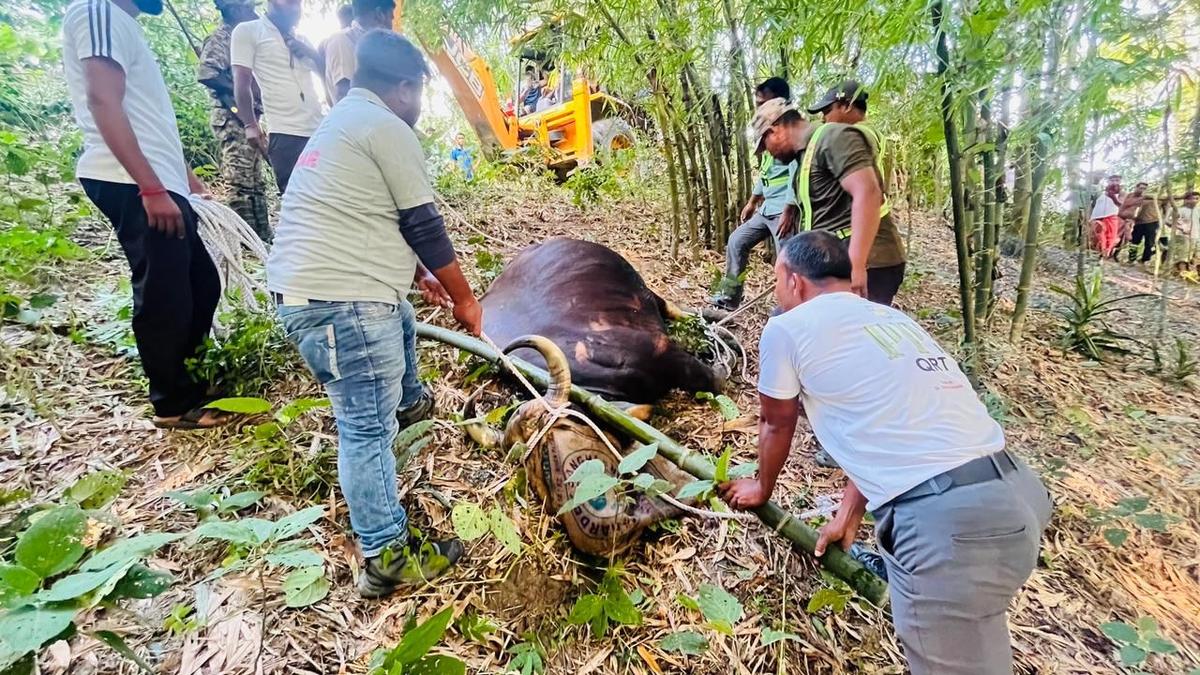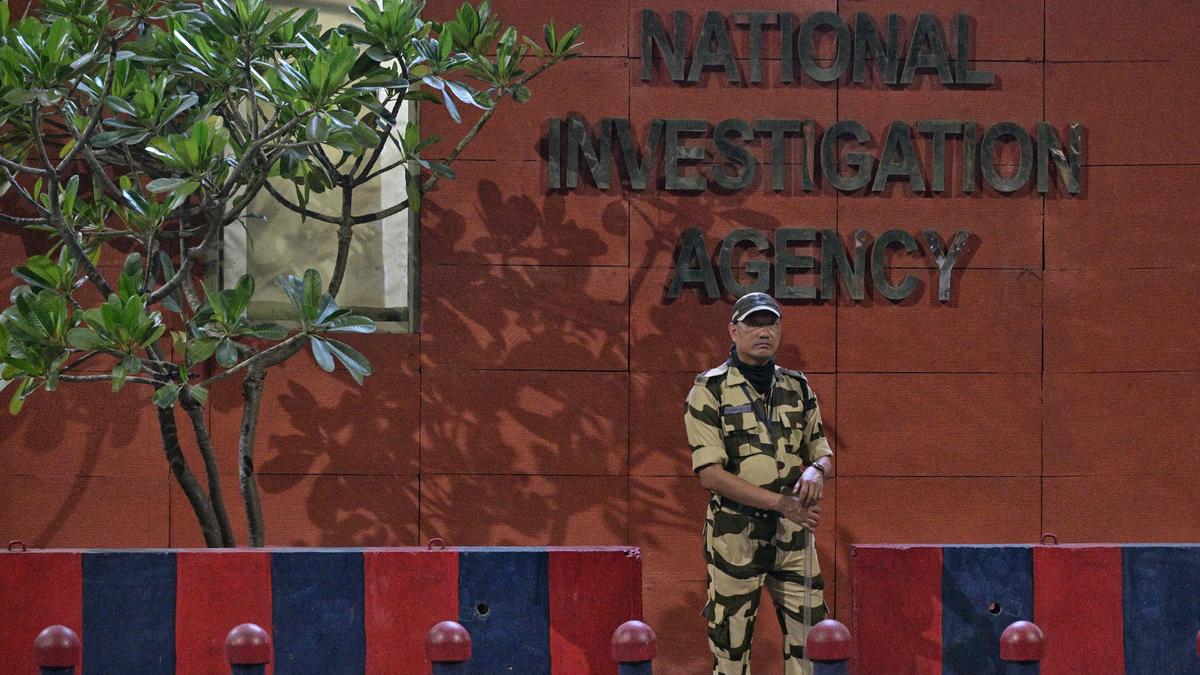One adult Indian one-horned rhinoceros has been found dead in the Dooars region of northern West Bengal following heavy rainfall, severe floods, and landslides in the area, Parveen Kaswan, Divisional Forest Officer, Jaldapara Wildlife Division, told The Hindu on Monday (October 6, 2025).
“The death occurred in Gorumara National Park. In Jaldapara, however, six rhinoceroses strayed outside the national park. Two of them have been guided back, while four of them are tired from their travels. We are giving them time to come back. Around 70 to 80 staff are monitoring their movements closely to ensure their return,” Mr. Kaswan said.

A leopard had been spotted in the water on Sunday but was now in safe territory, and the Forest Department was keeping a close eye on the movements of all animals, both manually and with drones, to ensure strays returned within the park limits, he added.
“Jaldapara was severely affected because major flooding occurred in the Torsa river, which flows through the national park. It is the lifeline of Jaldapara, and of the large population of rhinoceroses that inhabits it. While major damages have been caused to park infrastructure like bridges and fencing, we have not seen any major wildlife loss yet,” Mr. Kaswan said.
The flood-hit Dooars region in West Bengal at the foothills of the Eastern Himalayas houses the Gorumara National Park and Jaldapara National Park, which are popular tourist destinations known for biodiversity and wildlife. State Forest Minister Birbaha Hansda, along with senior Forest Department officials, visited the flood-affected regions on Monday to assess the scale of damage to humans, forests, and wildlife alike.
“From what I saw in my field visit today, there is no large-scale wildlife loss. Now that water is receding from most places, and our staff will be able to enter the more interior parts of the forests and national parks, we will be able to assess the situation better,” Ms. Hansda told The Hindu.
However, local wildlife conservation activists claimed that the carcasses of several animals had been recovered across Jalpaiguri and Alipurduar districts since Monday morning, a day after unprecedentedly high rainfall lashed the region and triggered floods leading to the death of at least 24 people.
According to wildlife activist Swarup Mitra, a number of spotted deer, sambar deer, barking deer, and Indian gaurs had been found dead, especially in Jalpaiguri’s Gorumara National Park and Alipurduar’s Jaldapara National Park regions.
“We have been recovering carcasses of animals like deer and Indian gaurs since the floods hit late on Saturday morning. The scale of wildlife deaths is becoming clearer as the water is receding. These carcasses are being recovered across areas such as Jaldhaka, Nagrakata, Ramsai, and Moynaguri,” Mr. Mitra said.
While an exact count was yet to be ascertained, so far, one rhinoceros, three Indian gaur, and one sambar deer are feared to have died, he said. A local village family in Jalpaiguri, whose house had collapsed in the flood, tried to rescue a struggling deer, but it eventually died, he added.
“In Ramsai, four Indian gaurs were sighted. Unfortunately, three of them died in the floods. One could be rescued by forest officials. Three sambar deer were also recovered, of whom one died. Even snake eggs and peacock eggs are being feared to have been destroyed,” Mr. Mitra said.
This was a tentative count, Mr. Mitra said, which did not include the small animals that lived inside the forests and could not climb, and a large number of them were also likely to have succumbed to the severe floods.
“When the water recedes, the mud in these areas will remain. In the next few days, we might find many carcasses stuck and already decomposing,” Mr. Mitra said.
“Because of the floods, a baby elephant had been separated from the herd in Mechi, while two separate herds of elephants reportedly got stranded in the Ramsai and Odlabari areas,” Avijan Saha, wildlife activist and coordinator at the wildlife conservation organisation Oirabot, said. Forest officials successfully conducted rescue operations in all three, he said.
“The issue here is that both Gorumara National Park and Jaldapara National Park have rivers flowing through them. When the rivers started flooding, some of the wild animals died, while many animals strayed [away] from the forest. The number of wild animals lost and dead will increase in the next few days, when we will be able to reach the more interior parts of the forests,” Mr. Saha said.
Published – October 06, 2025 10:54 pm IST

